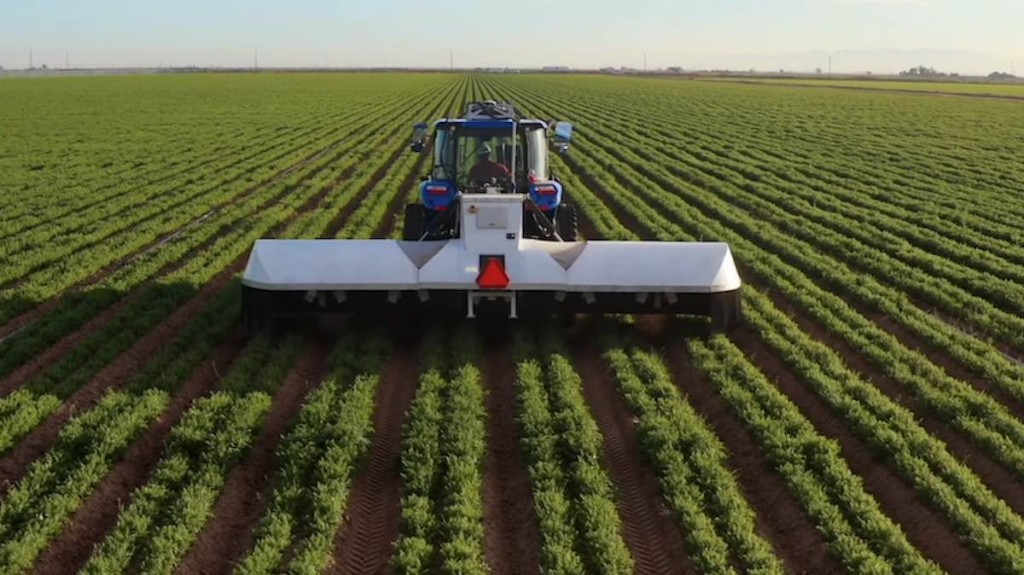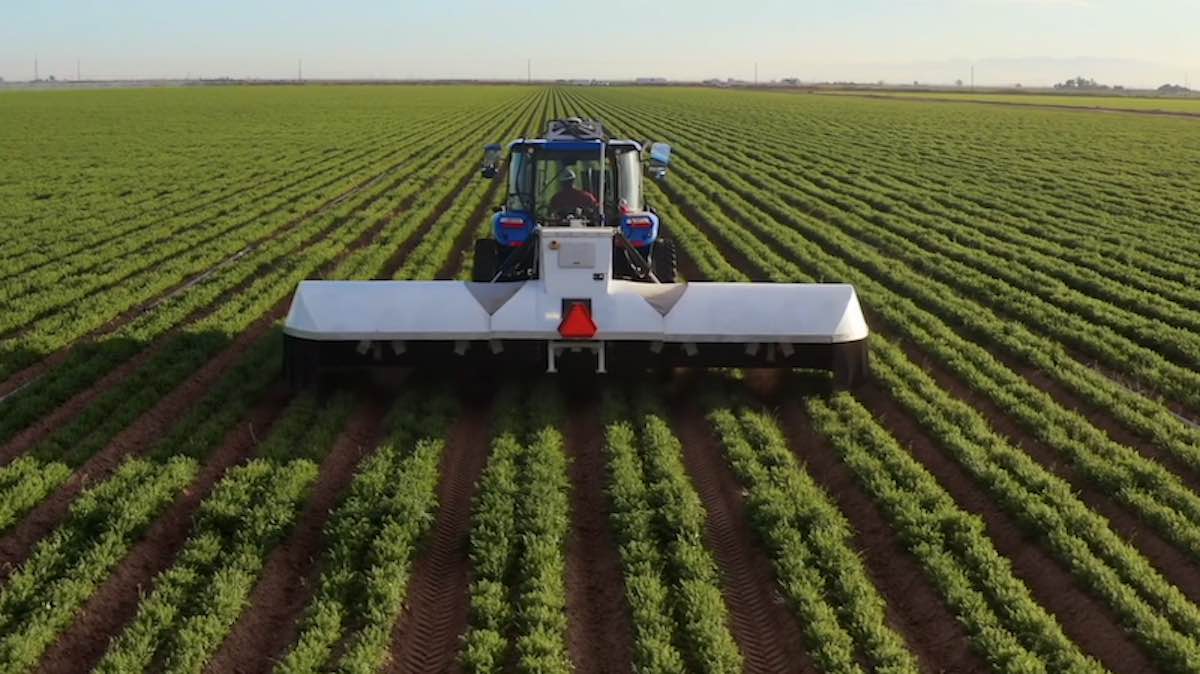
With 50 spray nozzles and a sophisticated computer system, tractors out in California’s central valley are towing artificially-intelligent robots behind them that look set to launch a fourth revolution in agriculture.
Passing over a field they can specifically target individual weeds and crops at a rate of 20 per second, before blasting them with either de-weeder or fertilizer within a millimeter of accuracy.
Verdant Robotics’ SprayBox robot can identify and treat 500,000 plants per hour while using 95% less chemical weedkiller.
Physically mobile robots are already probably more common on big farms than in most other sectors of the economy, but Verdant Robotics feel this is as much a step backwards as forwards.
“Increasingly folks are turning towards things like cover-cropping again, and inter-cropping and other regenerative agriculture techniques that allow us to keep the soil healthy,” said Gabe Siblev, Founder and CEO of Verdant Robotics, in a little mini-doc about their new technology.
“The challenges there have been that it’s difficult to do this at the same sort of scale that we can do monocropping, which is how we feed the world.”
But their robots have a party piece that could create a breakthrough—traditional management techniques that keep the soil healthier, produce more nutritious food and protect the environment, but at the scale currently enjoyed by monocropping.
SIMILAR: New John Deere Tractors Plow Day and Night With No One in the Cab: Autonomous Farming Debuts in 2022
The party piece is that when robots like the SprayBox identify a plant, they don’t simply fire and forget. Rather they’re actively building a centimeter-by-centimeter map of the whole field, complete with the geolocation and ID of every plant therein. This kind of mass data collection is thought to be key to making regenerative agriculture possible at a wide scale, where large numbers of workers would have to be employed otherwise.
“Ironically, it’s kind of returning to how we farmed you know, 100 years ago. Unlocking knowledge that a lot of older growers have, and bringing it back through technology,” said Siblev.
The labor shortage of farm workers is one of the reasons that a robotics company is targeting agriculture; another reason is to drastically cut the amount of chemical sprays that can impact our waterways and health.
In a 2019 California Farm Bureau Federation survey, 56% of participating farmers indicated that they had difficulty hiring the number of employees they needed for production of their main crop.
WATCH the mini-doc here…
SHARE This Awesome Robotic Farmer With Your Friends…




















